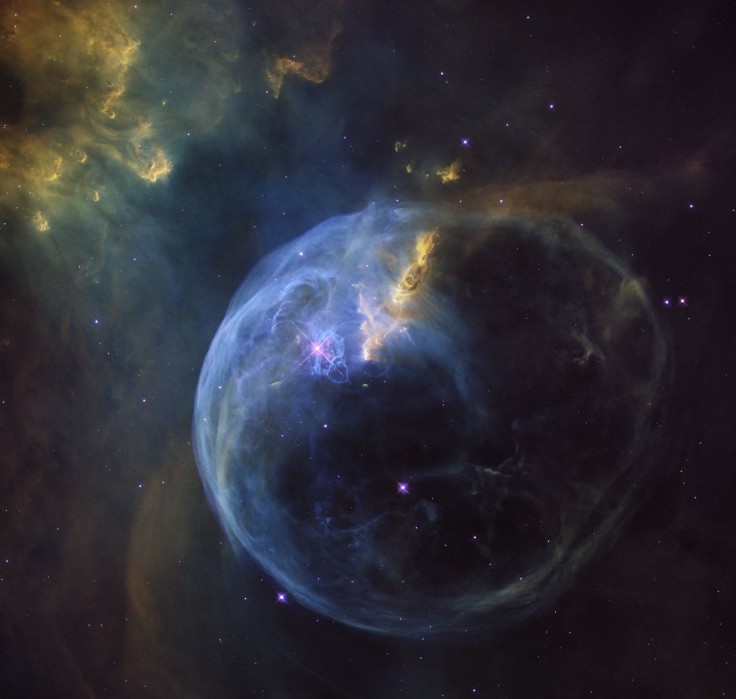The Hubble Space Telescope has been serving humanity as our first eyes in space since 1990. Even with its successor, the James Webb Space Telescope, already commissioned by NASA as an operational space observatory, Hubble continues to deliver excellent observations of space and the celestial bodies within it.
However, in a sea of fascinating celestial bodies in space, the celestial body we're about to discuss is one of the more interesting ones that astronomers found.
Thanks to its unique characteristics, NASA's team took a picture of it to celebrate Hubble's 26th year in space.
The Bubble Nebula Details

NGC 7635, also known as the Bubble Nebula, is an emission nebula 7,100 light-years away from Earth and is located in the Cassiopeia constellation, per the European Space Agency (ESA).
The nebula was discovered in 1787 by British astronomer William Herschel, who, at the time, was studying various nebulae to understand them better, per MacTutor. He previously discovered many other nebulae, such as the Eskimo Nebula, Cat's Eye Nebula, and the Cone Nebula.
Thanks to the observations he made during these discoveries, he deduced that the nebulae he found were "objects in different stages of development."
Read More : HoYoverse Releases Trailer for Upcoming Tears of Themis Event; Will Coincide With Vyn's Birthday
The nebula was found to be seven light-years across and is formed by a "seething star" 45 times more massive than our sun. NASA added that the star that formed the nebula is burning a million times brighter than our sun can ever do.
The first time humanity ever saw a picture of the nebula was during the 26th anniversary of Hubble's time in space, when NASA released a photo of the Bubble Nebula on April 21, 2016.
Hubble used its Wide Field Camera 3 to capture the nebula's picture in visible light.
How Did The Bubble Nebula Get Its Name?
The Bubble Nebula got its name from the bubble-like shape thanks to the powerful gaseous outflows called stellar winds that emanate from the star that created it.
These stellar winds are so hot that it escapes from the star at speeds over 4 million miles per hour. During its escape, it sweeps up the cold, interstellar gas in front of it, forming the Bubble Nebula's outer edge.
While the outer forms outward, it collides into dense regions of cold gas on one side of the bubble, making the star look off-center. You can see where the star is within the bubble in Hubble's photo, with the star that created the nebula shining brightly while being surrounded by blue "light."
The gases that make up the bubble are oxygen, hydrogen, and nitrogen. These gases were hot enough for them to emit different kinds of light. For example, the superheated oxygen emits a blue light that forms the outer edges of the bubble. Meanwhile, the hydrogen and nitrogen from the star, which create green and red light, respectively, combined to emit yellow light, which makes up the pillars near the nebula.
NASA estimated from the rate the star creating the nebula is expending energy that it will eventually explode through a supernova in 10 to 20 million years, popping the bubble as a result.









